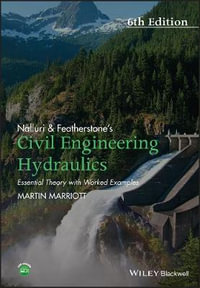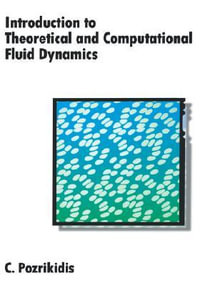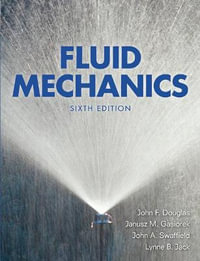| Preface | p. XV |
| A Guide to This Book | p. 1 |
| p. 3 |
| General Background, Opportunity and Motivations | p. 3 |
| General background and opportunity | p. 3 |
| Motivations and Position of the Design Problem | p. 5 |
| Brief Presentation of Proverbs | p. 10 |
| Objectives | p. 10 |
| Research Issues | p. 10 |
| Research Strategy and Development Procedure for Probabilistic Design Tools | p. 12 |
| Key Results and Their Practical Importance | p. 21 |
| Hydrodynamic Aspects (Task 1) | p. 21 |
| Geotechnical Aspects (Task 2) | p. 35 |
| Structural Aspects (Task 3) | p. 43 |
| Probabilistic Design Tools (Task 4) | p. 48 |
| Toward probabilistic risk analysis and management | p. 55 |
| p. 61 |
| Introduction | p. 61 |
| Objectives of Task 1 | p. 61 |
| Outline of deterministic design procedure | p. 62 |
| Waves at the Structure | p. 67 |
| Wave conditions at the structure | p. 67 |
| Use of parameter map | p. 75 |
| Estimation of proportion of impacts | p. 78 |
| Hydraulic Responses | p. 82 |
| Wave transmission over caissons | p. 82 |
| Wave overtopping discharges | p. 84 |
| Wave reflections | p. 84 |
| Pulsating Wave Loads | p. 87 |
| Horizontal and vertical forces / pressures | p. 87 |
| Seaward or negative forces | p. 88 |
| Effects of 3-d wave attack on pulsating loads | p. 92 |
| Uncertainties and scale corrections | p. 92 |
| Use of numerical models | p. 94 |
| Pressures on berms | p. 95 |
| Wave Impact Loads | p. 98 |
| Horizontal and vertical forces / pressures | p. 98 |
| Seaward impact forces | p. 106 |
| Effects of 3-d wave attack on impact loadings | p. 110 |
| Uncertainties and scale corrections | p. 113 |
| Use of numerical models | p. 115 |
| Pressures on berms | p. 116 |
| Broken Wave Loads | p. 120 |
| Strongly depth-limited waves | p. 120 |
| Wave loads on crown walls | p. 122 |
| Wave loads on caisson on high mounds | p. 127 |
| Field Measurements and Database | p. 131 |
| Dieppe | p. 131 |
| Porto Torres | p. 131 |
| Las Palmas | p. 131 |
| Gijon | p. 131 |
| Alderney | p. 132 |
| Field measurement database | p. 133 |
| Alternative Low Reflection Structures | p. 134 |
| Perforated vertical walls | p. 134 |
| Other types of caissons | p. 147 |
| p. 157 |
| Introduction | p. 157 |
| Guidelines for Modelling | p. 158 |
| Geotechnical failure modes | p. 158 |
| Relevant phenomena | p. 161 |
| Framework of analysis | p. 162 |
| Soil Investigations and Soil Parameters | p. 163 |
| Strategy for soil investigations | p. 163 |
| Seismic profiling | p. 164 |
| Interpretation of CPTU tests | p. 164 |
| Borings, soil sampling and sample testing | p. 167 |
| Character of soil parameters | p. 168 |
| Permeability | p. 169 |
| Stiffness | p. 170 |
| Strength | p. 171 |
| Dynamics | p. 173 |
| Concept of equivalent stationary load | p. 173 |
| Basic assumptions of mass-spring(-dashpot) model | p. 175 |
| Prediction of natural periods | p. 178 |
| Prediction of dynamic response factor | p. 181 |
| Inertia with plastic deformation | p. 183 |
| Instantaneous Pore Pressures and Uplift Forces | p. 184 |
| Relevant phenomena | p. 184 |
| Quasi-stationary flow in the rubble foundation | p. 185 |
| Uplift force, downward force and seepage force in rubble foundation | p. 187 |
| Non-stationary flow in rubble foundation | p. 188 |
| Instantaneous pore pressures in sandy or silty subsoil | p. 190 |
| Degradation and Residual Pore Pressures | p. 193 |
| Relevant phenomena in subsoil | p. 193 |
| Sandy subsoils | p. 194 |
| Clayey subsoils | p. 195 |
| Limit State Equations and Other Calculation Methods for Stability and Deformation | p. 196 |
| Schematisation of loads during wave crest | p. 196 |
| Limit state equations for main failure (sub)modes during wave crest | p. 199 |
| Seaward failure during wave trough | p. 201 |
| More sophisticated methods | p. 201 |
| Three-dimensional rupture surfaces | p. 203 |
| Uncertainties | p. 204 |
| Survey of uncertainties | p. 204 |
| Uncertainties about soil parameters | p. 206 |
| Model uncertainties | p. 207 |
| Influence of Design Parameters | p. 209 |
| General | p. 209 |
| Vertical breakwater on thin bedding layer and coarse grained subsoil with pulsating wave loads | p. 209 |
| Effects with other breakwater types | p. 215 |
| Possibilities for Design Improvements | p. 215 |
| Variation of design parameters if rubble foundation is present | p. 215 |
| Caisson foundation directly on sand | p. 218 |
| Skirts to improve foundation capacity in clayey soils | p. 218 |
| p. 225 |
| Introduction | p. 225 |
| Background | p. 225 |
| Design sequence | p. 226 |
| Generic Types of Reinforced Concrete Caissons | p. 227 |
| Planar rectangular multi-celled caissons | p. 227 |
| Perforated rectangular multi-celled caissons | p. 228 |
| Circular-fronted caissons | p. 228 |
| Alternative designs | p. 229 |
| Loads Acting on the Caisson | p. 229 |
| Geomechanical Factors Relevant to the Structural Response | p. 229 |
| Characteristics of the ballast fill in caisson cells | p. 230 |
| Characteristics of rubble foundation and sub-soil | p. 230 |
| Unevenness of the foundation | p. 231 |
| Hydraulic Data Required to Design a Reinforced Concrete Caisson | p. 231 |
| Pressure distribution on front face | p. 231 |
| Uplift pressure distribution on base slab | p. 232 |
| Over-pressure on top slab and super-structure | p. 232 |
| Failure Modes Associated with Pre-Service and Inservice Conditions | p. 233 |
| Pre-service states | p. 233 |
| In-service states | p. 234 |
| The Need for a New Integrated Design Code | p. 236 |
| Design standards relevant to reinforced concrete caissons | p. 236 |
| Scope of selected codes | p. 237 |
| Comparisons between design codes | p. 237 |
| Suggested features for a possible new unified design code | p. 239 |
| Simplified Limit State Equations | p. 241 |
| Identification of structural idealisations | p. 241 |
| Limit state equations | p. 245 |
| Uncertainties Attributed to the Ls Equations: More Refined Structural Models | p. 248 |
| Simple 3-degree-of-freedom dynamic model | p. 248 |
| Layered shell non-linear FE models | p. 251 |
| Full 3-dimensional continuum FE models | p. 253 |
| Construction Issues | p. 258 |
| p. 261 |
| Introduction | p. 261 |
| General Introduction of Probabilistic Methods | p. 262 |
| Introduction | p. 262 |
| Limit state equations and uncertainties | p. 262 |
| Reliability analysis on level II and III | p. 265 |
| Fault tree analysis | p. 271 |
| Calculation of system probability of failure | p. 272 |
| Choice of safety level | p. 275 |
| Reliability based design procedures | p. 277 |
| Probabilistic Methods Applied to Vertical Breakwaters in General | p. 290 |
| Fault tree for a vertical breakwater | p. 290 |
| Specific limit states for vertical breakwaters | p. 290 |
| Case Studies | p. 294 |
| General | p. 294 |
| Genoa Voltri (Italy) | p. 294 |
| Easchel breakwater | p. 303 |
| Reliability analysis of geotechnical failure modes for the Mutsu-Ogawara West breakwater | p. 311 |
| Perspectives | p. 317 |
| Durability | p. 317 |
| Impacts | p. 317 |
| Construction | p. 317 |
| Reflection | p. 318 |
| Shear keys | p. 318 |
| p. 321 |
| Hydraulic Aspects | p. 321 |
| Geotechnical Aspects | p. 323 |
| Structural Aspects | p. 325 |
| Probabilistic Aspects | p. 327 |
| Annex 1 | p. 331 |
| Annex 2 | p. 357 |
| Annex 3 | p. 363 |
| Annex 4 | p. 366 |
| Table of Contents provided by Syndetics. All Rights Reserved. |
























